Zidong Guo
Towards Accurate Facial Landmark Detection via Cascaded Transformers
Aug 23, 2022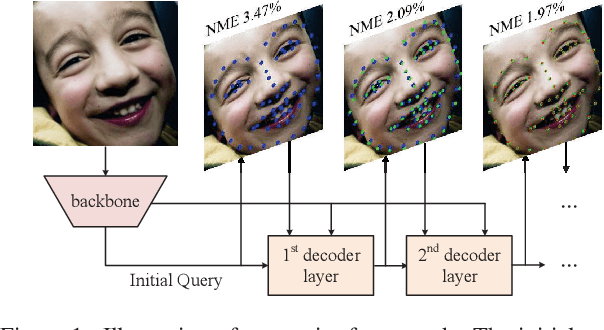
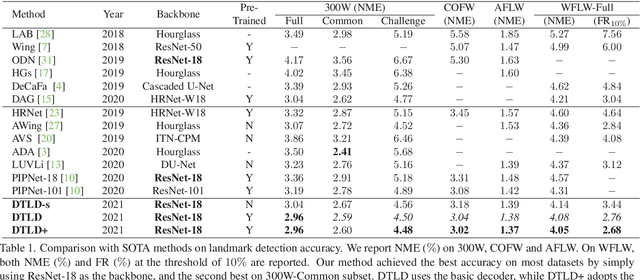
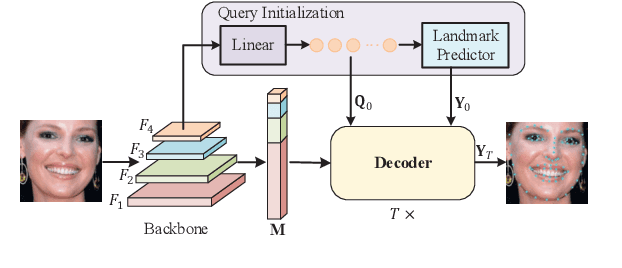

Abstract:Accurate facial landmarks are essential prerequisites for many tasks related to human faces. In this paper, an accurate facial landmark detector is proposed based on cascaded transformers. We formulate facial landmark detection as a coordinate regression task such that the model can be trained end-to-end. With self-attention in transformers, our model can inherently exploit the structured relationships between landmarks, which would benefit landmark detection under challenging conditions such as large pose and occlusion. During cascaded refinement, our model is able to extract the most relevant image features around the target landmark for coordinate prediction, based on deformable attention mechanism, thus bringing more accurate alignment. In addition, we propose a novel decoder that refines image features and landmark positions simultaneously. With few parameter increasing, the detection performance improves further. Our model achieves new state-of-the-art performance on several standard facial landmark detection benchmarks, and shows good generalization ability in cross-dataset evaluation.
Domain Adaptation Gaze Estimation by Embedding with Prediction Consistency
Nov 15, 2020
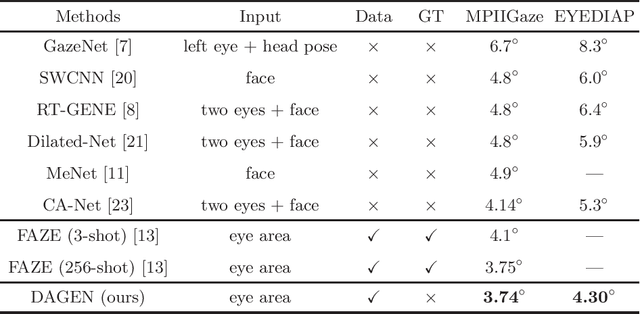
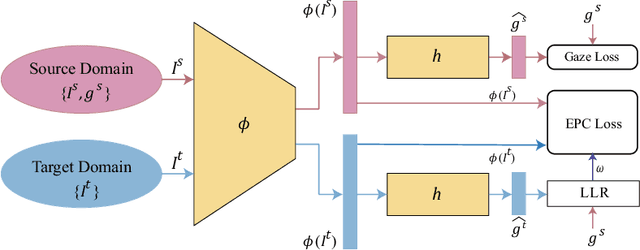

Abstract:Gaze is the essential manifestation of human attention. In recent years, a series of work has achieved high accuracy in gaze estimation. However, the inter-personal difference limits the reduction of the subject-independent gaze estimation error. This paper proposes an unsupervised method for domain adaptation gaze estimation to eliminate the impact of inter-personal diversity. In domain adaption, we design an embedding representation with prediction consistency to ensure that the linear relationship between gaze directions in different domains remains consistent on gaze space and embedding space. Specifically, we employ source gaze to form a locally linear representation in the gaze space for each target domain prediction. Then the same linear combinations are applied in the embedding space to generate hypothesis embedding for the target domain sample, remaining prediction consistency. The deviation between the target and source domain is reduced by approximating the predicted and hypothesis embedding for the target domain sample. Guided by the proposed strategy, we design Domain Adaptation Gaze Estimation Network(DAGEN), which learns embedding with prediction consistency and achieves state-of-the-art results on both the MPIIGaze and the EYEDIAP datasets.
 Add to Chrome
Add to Chrome Add to Firefox
Add to Firefox Add to Edge
Add to Edge